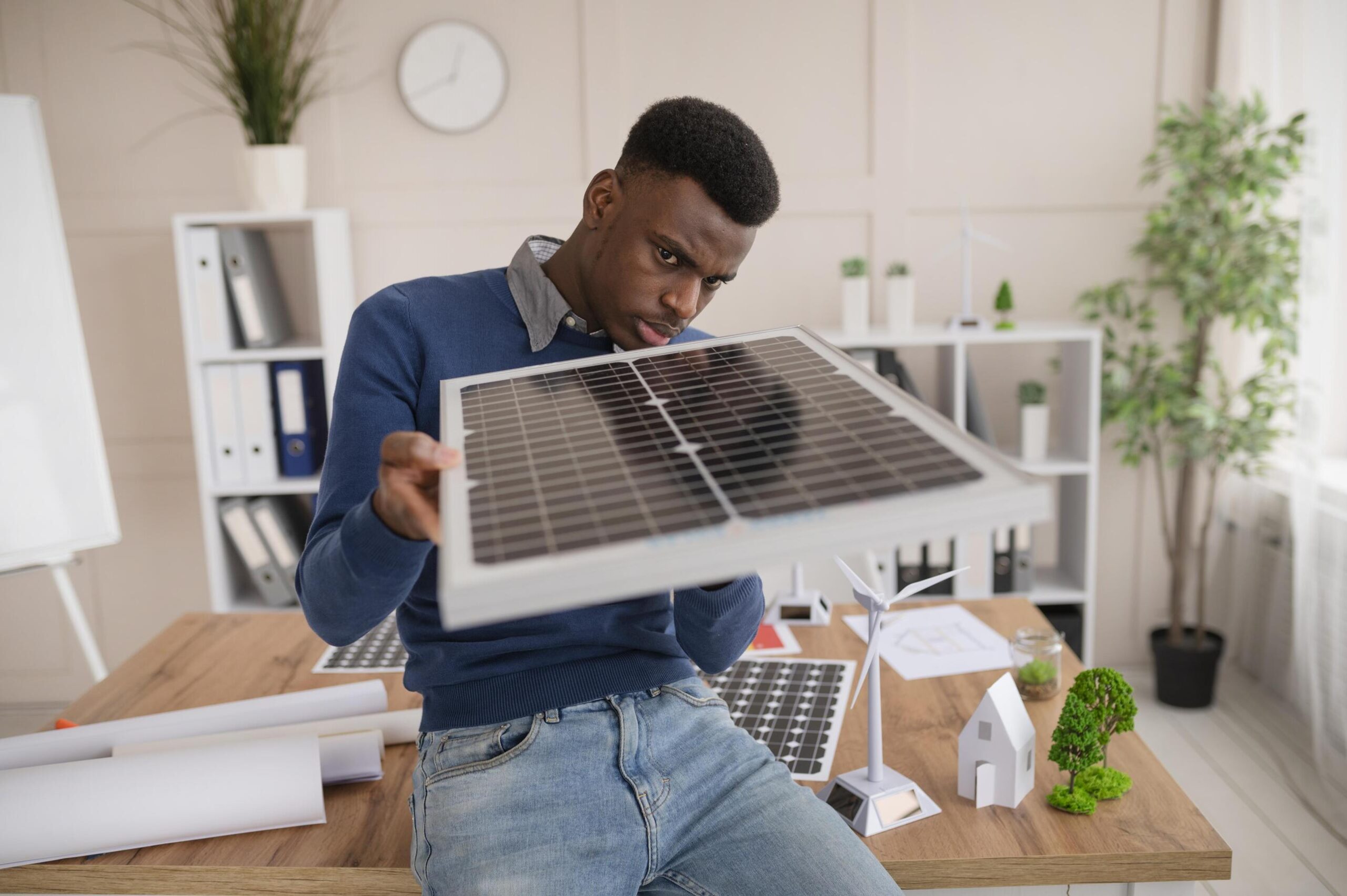
Reducing Household Energy Consumption: A Comprehensive Guide
I recently received a call from my brother, lamenting on how shocked he had been when he reviewed his bills and saw his energy bill staring at him. He couldn’t believe how high it had gotten, despite his best efforts to cut back. “I barely used any electricity!”, he lamented. We eventually got into a conversation about ways to manage these rising costs.
Reducing household energy consumption is not just about saving money; it’s also about making a positive impact on the environment. In this comprehensive guide, we’ll explore practical tips and strategies to help you lower your energy bills, reduce your carbon footprint, and create a more sustainable home.
Understanding Energy Consumption
Before looking into practical solutions, it’s essential to understand where your energy consumption comes from. The average household in North America consumes around 877 kWh per month (U.S. Energy Information Administration, 2021). According to Statistics Canada, the average Canadian household consumed approximately 7,600 kilowatt-hours (kWh) of electricity per year in 2021. This equates to about 633 kWh per month. The primary culprits of high energy usage typically include:
- Heating and cooling systems
- Water heaters
- Major appliances (refrigerators, washing machines, etc.)
- Lighting
- Electronics
Recognizing the sources of energy consumption in your home is the first step toward making effective changes.
1. Conduct an Energy Audit
The first step to reducing energy consumption is identifying where energy is being wasted. An energy audit can provide valuable insights into your household’s energy use. Many utility companies offer free or discounted energy audits, which can reveal areas for improvement.
During an audit, you’ll check for:
- Air leaks around windows and doors
- Insulation levels
- Efficiency of heating and cooling systems
- Performance of major appliances
According to the U.S. Department of Energy, homes that undergo energy audits can save between 5% to 30% on their energy bills by making recommended improvements.
2. Upgrade to Energy-Efficient Appliances
Older appliances can consume significantly more energy than modern, energy-efficient models. When shopping for new appliances, look for the Energy Star label, which indicates that the appliance meets energy efficiency guidelines set by the U.S. Environmental Protection Agency.
A study by the American Council for an Energy-Efficient Economy (ACEEE) found that if all U.S. households replaced their old appliances with Energy Star models, we could save enough energy to power 27 million homes for a year!
3. Optimize Heating and Cooling
Heating and cooling can account for nearly 50% of your home’s energy usage. Here are some ways to optimize these systems:
- Programmable Thermostat: Invest in a programmable or smart thermostat to better control your heating and cooling. Set it to lower temperatures when you’re not home or at night.
- Regular Maintenance: Schedule annual maintenance for your HVAC system to ensure it operates efficiently. Clean or replace air filters regularly.
- Seal Ducts: Ensure that ducts are well-sealed and insulated to prevent air leaks.
The Department of Energy estimates that proper maintenance of heating and cooling systems can save homeowners up to 10% on their annual energy bills.
4. Improve Insulation and Seal Leaks
A well-insulated home can significantly reduce energy consumption. Here are some key areas to focus on:
- Attic Insulation: Heat rises, and if your attic isn’t well-insulated, you could be losing a substantial amount of energy. Adding insulation can help keep your home warm in the winter and cool in the summer.
- Seal Drafts: Use caulk or weatherstripping to seal gaps around windows, doors, and other openings. This can prevent air leaks that waste energy.
According to the U.S. Department of Energy, homeowners can save an average of 15% on heating and cooling costs by sealing and insulating their homes.
5. Adopt Smart Lighting Solutions
Lighting is another significant contributor to energy consumption. Here are some strategies to reduce lighting costs:
- Switch to LED Bulbs: LED bulbs use up to 80% less energy than traditional incandescent bulbs and last much longer.
- Utilize Natural Light: Open curtains and blinds during the day to let in natural light, reducing the need for artificial lighting.
- Smart Lighting: Consider installing smart lighting systems that allow you to control lights remotely and set schedules.
The Lighting Research Center reports that switching to LED lighting can save the average household $225 in energy costs over the life of a bulb.
6. Manage Electronics and Gadgets
Electronics can be surprising energy drains, even when they’re not in use. Here’s how to manage their consumption:
- Unplug Devices: Many electronics continue to draw power when plugged in, even if they’re turned off. Unplug devices when not in use or use smart power strips to cut off power automatically.
- Energy-Efficient Devices: Opt for energy-efficient models when purchasing new electronics. Look for products with the Energy Star label.
According to the Natural Resources Defense Council, “Vampire energy” (energy drawn by electronics when not in use) can account for 10% of household energy consumption.
7. Use Water Wisely
Water heating is a significant source of energy use in the home. Here are some tips to reduce water heating costs:
- Lower Water Heater Temperature: Set your water heater to 120°F (49°C). This temperature is typically sufficient for most household needs and can save energy.
- Install Low-Flow Fixtures: Consider installing low-flow showerheads and faucets to reduce hot water usage.
- Wash Full Loads: Run your dishwasher and washing machine only with full loads to maximize efficiency.
The Alliance to Save Energy states that lowering your water heater temperature by just 10°F can save you 3% to 5% on water heating costs.
8. Embrace Renewable Energy Sources
If feasible, consider investing in renewable energy sources, such as solar panels. While the initial investment can be significant, many homeowners see substantial long-term savings.
The Solar Energy Industries Association (SEIA) reports that residential solar installations have grown by over 200% in the past decade, making solar power more accessible and affordable than ever.
9. Practice Energy-Conscious Habits
Ultimately, reducing energy consumption also requires a change in habits. Here are some practices to consider:
- Turn Off Lights: Make it a habit to turn off lights in rooms that aren’t in use.
- Limit Heating and Cooling Use: Dress appropriately for the weather instead of relying solely on heating and cooling systems.
- Mindful Appliance Use: Use appliances like dishwashers and laundry machines during off-peak hours when electricity rates may be lower.
Conclusion
Reducing household energy consumption is not only achievable but essential for saving money and protecting the environment. By understanding your energy usage, making informed choices about appliances and systems, and adopting energy-conscious habits, you can make a significant impact.
Start with a home energy audit, upgrade to energy-efficient appliances, optimize your heating and cooling, improve insulation, adopt smart lighting, manage electronics, use water wisely, consider renewable energy, and practice mindful habits. Each small change contributes to a larger effort towards sustainability.
References
- Statistics Canada. (2021). “Electricity Consumption in Canadian Households.” https://www150.statcan.gc.ca/t1/tbl1/en/tv.action?pid=2510006001
- U.S. Energy Information Administration. (2021). “Electric Power Monthly.”
- American Council for an Energy-Efficient Economy (ACEEE). “Energy Efficiency Programs.”
- U.S. Department of Energy. “Energy Saver Guide.”
- Natural Resources Defense Council. “The Energy Vampires.”
- Solar Energy Industries Association (SEIA). “Solar Industry Data.”












